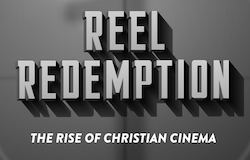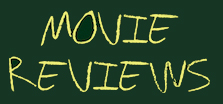A Year with Hitchcock: The Ring, by Reed Lackey
23 Jan
An outlier in the filmography of a man mostly dedicated to suspense stories, The Ring is a sports-centric, love-triangle drama, and one that is surprisingly effective, despite some obvious flaws.
There is some conflicting information surrounding the chronology of The Ring in Hitchcock’s filmography. Most sources place it as immediately following The Lodger (which is where I’ve chosen to include it). However, according to “Hitchcock Truffaut” by Francois Truffaut, this was actually Hitch’s sixth picture. I mention this trivial contradiction because regardless of whether it was his fourth or sixth film, Hitchcock himself regarded it as his second “true Hitchcock film.”
This honorary title is made even more unusual considering that the film is very unlike what Hitchcock is known for: namely, suspense thrillers. Yet, when we consider that Hitchcock was not primarily a crafter of suspense, but rather a crafter of film, it becomes easy to see why he so highly regarded this film in his filmography. It is, for its time, one of his most inventive and expressionistic films, employing a variety of subtle visual metaphors and visual storytelling techniques.
The story itself involves a sideshow attraction boxer who loses his first fight to a hustle with a bonafide champion (and risks losing his wife to the same man). This begins a sequence of bouts for respect and affection that are highly sympathetic to the viewer, although I often found myself thinking, “Is she really worth it if her faithfulness is that conditional?” But I also found myself truly rooting for Jack and for the love that he wants to earn from his estranged beloved, so I cast those reservations aside and enjoyed the climb towards the inevitable final bout.
Regarding technical specifics, it’s one of Hitchcock’s few (if not only) writing credits and a variety of his signature film techniques are at play here. He makes particular use of jump-cuts and composite shots to display emotion and internal conflict visually in ways that are rather impressive. Two specific matters of note are the use of a montage of promotional posters to communicate not only the passage of time, but the rising success of One-Round Jack as he climbs his way to the climactic rematch. The other is the use of a bracelet (given to Jack’s wife by the man who first bested him in the beginning of the film). It comes to represent the romantic entanglement in which the three main characters are involved (and provide an alternative perception of the title – both the boxing ring and the circular bracelet) and Hitchcock uses it in inventive ways to display the internal thoughts and emotions of his characters.
One uncomfortable but necessary note: contextualizing the time this was made can help explain (though not excuse) two moments of deeply uncomfortable racism (including one casual use of the n-word regarding a character that we never see).
Despite the non-suspenseful nature of the narrative (and the offensive racial colloquialisms) this is still a surprisingly enjoyable entry in Hitch’s early filmography, if not a terribly vital or crucial one.
Summary:
Accessibility – Available on several low-budget DVD collections
Themes – Romantic Entanglements, Infidelity
Category – OK, for the Curious




No comments yet